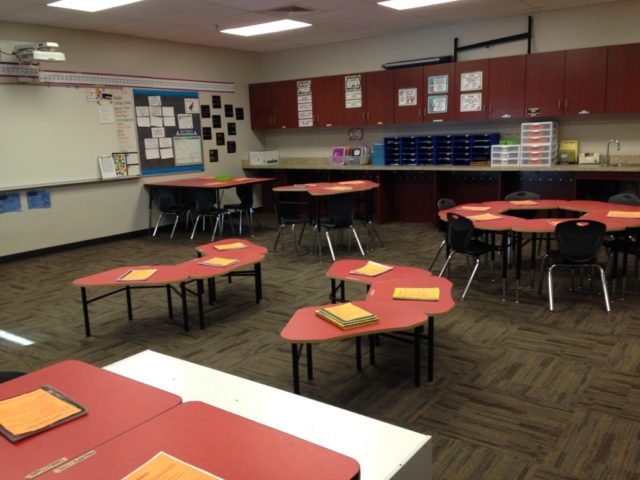Flexible Classroom Seating Encourages Student Engagement
Abby McKimm’s fourth-grade-students were fidgety. During classroom instruction time, McKimm often noticed her students shifting in their seats, becoming antsy, and losing their focus and concentration.
“I noticed students standing at their desks and frequently asking if they were allowed to work on the floor,” McKimm said.
In an attempt to re-focus her students, McKimm decided to try implementing flexible seating. A current trend in education, the purpose of flexible seating is to create various opportunities for students to work in an environment they can be most successful and productive in. From sitting the floor, to a chair, to simply standing at a desk, students are able to choose how they want to learn and work, which increases intrinsic motivation and productivity.

“Flexible seating allows students to collaborate without distracting the rest of the class because students are able to work next to their peers, by choice,” McKimm said. “People are social beings and my instruction has to respect that.”
McKimm began by creating limited flexible seating. She turned three desks into standing desks and purchased clipboards so students could work on the floor.
“After a week of very limited flexible seating, I completely ‘flipped’ my classroom and adopted flexible seating,” McKimm said.
With the help of a coworker, McKimm transitioned her classroom from traditional seated learning to a combination of floor tables, raised tables, yoga ball seating, floor pillows, and foam exercise rollers.
“My students that need to fidget while they work benefit from the foam rollers because they can move without distracting others or themselves,” McKimm said.
Students have already been responding with enthusiasm to the new seating arrangements, and McKimm has noticed a positive impacted on student engagement and learning.
“Students love flexible seating,” McKimm said. “Students are allowed to pick where they work, which has drastically increased student engagement and productivity. Flexible seating encourages students to make decisions that benefit their learning style the most.”
For McKimm’s class, flexible seating has given students the ability to move, collaborate, communicate with their peers, and develop critical thinking skills.
“I love seeing my students working together, focused on their work, and excited to learn,” McKimm said.





Leave a Reply
Want to join the discussion?Feel free to contribute!